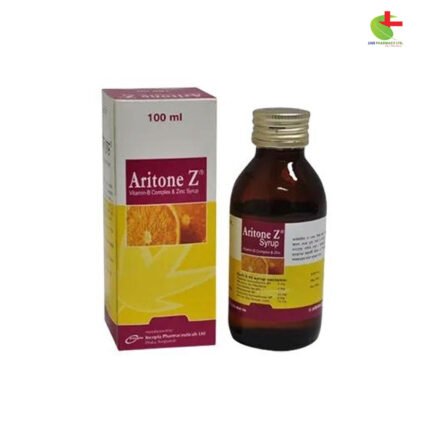Trihexy 5
125.00৳ Bottle (50ml)
- Trihexyphenidyl is used as an adjunct in the treatment of Parkinsonism and extrapyramidal disorders caused by CNS drugs.
- It works by inhibiting the parasympathetic nervous system, helping to reduce symptoms like tremors and rigidity.
- The dosage should be individualized, with gradual increases to minimize side effects.
- Common side effects include dry mouth, blurred vision, and dizziness, with potential for more serious issues like glaucoma.
 Brand
Brand
|
Incepta Pharmaceuticals Ltd |
|---|---|
 Generics
Generics
|
Trihexyphenidyl Hydrochloride |
 Type
Type
|
Syrup |
Indications
Trihexy is used as an adjunctive treatment for all forms of parkinsonism, including postencephalitic, arteriosclerotic, and idiopathic types. It is particularly beneficial when combined with levodopa to enhance the management of Parkinson’s disease. Additionally, Trihexy is effective for controlling extrapyramidal symptoms caused by central nervous system (CNS) drugs, such as dibenzoxazepines, phenothiazines, thioxanthenes, and butyrophenones.
Consult with a registered healthcare provider before using this medication.
Description
Trihexy works by directly inhibiting the parasympathetic nervous system. It also has a relaxing effect on smooth muscle, achieved both through direct action on the muscle and indirectly via its influence on the parasympathetic system.
Pharmacology
Trihexyphenidyl is a non-selective muscarinic acetylcholine receptor antagonist, with a higher affinity for the M1 subtype. Research shows that it has a stronger binding to central muscarinic receptors in the cerebral cortex compared to peripheral receptors. Additionally, studies suggest that Trihexyphenidyl may influence nicotinic acetylcholine receptor activity, indirectly boosting dopamine release in the striatum. While the precise mechanism remains unclear, Trihexyphenidyl is known to alleviate symptoms of Parkinson’s disease and other movement disorders.
Dosage & Administration
Dosage should be tailored to the individual, starting with a low dose, especially for patients over 60 years. Trihexyphenidyl can be taken before or after meals, depending on how the patient responds. Postencephalitic patients, often prone to excessive salivation, may benefit from taking the medication after meals, possibly along with a small dose of atropine. For those who experience excessive dryness in the mouth, taking the medication before meals may be preferable, unless it causes nausea.
For Idiopathic Parkinsonism, the initial dose is 1 mg on the first day, gradually increasing by 2 mg every 3 to 5 days until a daily total of 6 to 10 mg is achieved. Some patients, particularly those with postencephalitic Parkinsonism, may require up to 12 to 15 mg daily.
For Drug-Induced Parkinsonism, the dosage is personalized based on the severity of symptoms, typically ranging from 5 to 15 mg daily. Some patients may achieve satisfactory control with a starting dose of 1 mg. The dosage may be adjusted based on the patient’s response.
When used with Levodopa, the doses of both medications may need to be reduced to avoid side effects. Trihexyphenidyl is generally prescribed in doses of 3 to 6 mg daily, divided into several doses.
Interaction
Caution is advised when Trihexyphenidyl is taken with cannabinoids, barbiturates, opiates, or alcohol, as they may amplify sedative effects, leading to an increased risk of abuse. Concomitant use with CNS depressants can intensify the sedative effects. Other medications with significant anticholinergic properties, such as monoamine oxidase inhibitors and tricyclic antidepressants, may enhance the anticholinergic side effects of Trihexyphenidyl.
Contraindications
Trihexyphenidyl should not be used in patients who are hypersensitive to the drug or those with narrow-angle glaucoma, as it may worsen the condition and potentially lead to blindness with prolonged use.
Side Effects
Common side effects include dry mouth, blurred vision, dizziness, mild nausea, and nervousness, affecting 30-50% of patients. These side effects typically lessen over time and can be managed by adjusting the dosage. Rare side effects may include severe dryness of the mouth, rashes, skin changes, and psychiatric symptoms like delusions and hallucinations. Trihexyphenidyl may also cause cognitive dysfunction, constipation, drowsiness, urinary retention, tachycardia, and increased intraocular pressure. Abrupt withdrawal can worsen Parkinsonism symptoms or lead to Neuroleptic Malignant Syndrome (NMS).
Pregnancy & Lactation
There are no controlled studies in pregnant animals or humans. Trihexyphenidyl should only be used during pregnancy if the benefits outweigh the risks. It is not known whether Trihexyphenidyl is excreted in breast milk, so caution is advised when administering it to nursing mothers. It may also suppress lactation.
Precautions & Warnings
Before starting Trihexyphenidyl therapy, a gonioscope evaluation should be conducted, and intraocular pressure should be closely monitored. Trihexyphenidyl may precipitate angle-closure glaucoma, which could lead to blindness. The drug should be used cautiously in hot environments or alongside other anticholinergics, particularly for those with central nervous system disorders, the elderly, or those who engage in manual labor. Severe anhidrosis and hyperthermia can occur, requiring dosage adjustments to avoid impairing the body’s ability to regulate temperature.
Overdose Effects
Overdose can lead to typical symptoms of anticholinergic toxicity, including dilated pupils, dry skin, tachycardia, fever, and delirium. Severe cases can result in coma, respiratory arrest, or death. Immediate treatment includes symptomatic care, such as gastric lavage, administration of diazepam for CNS excitation, and supportive measures like fluid replacement and respiratory support. Trihexyphenidyl is not known to be dialyzable.
Therapeutic Class
Antiparkinson Drugs
Storage Conditions
Store in a dry place at temperatures not exceeding 30°C, away from light.













Reviews
There are no reviews yet.